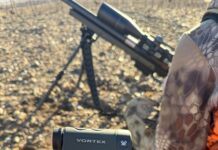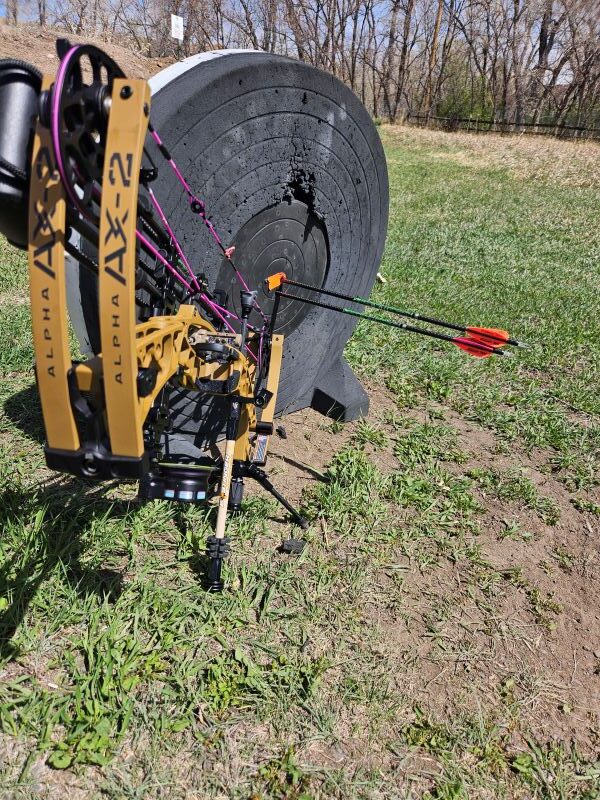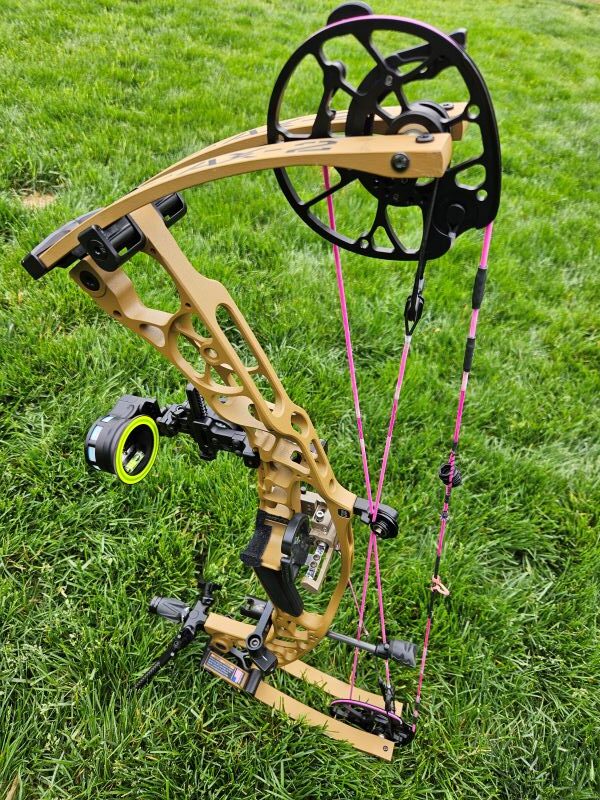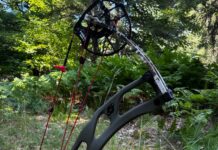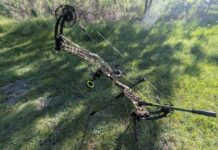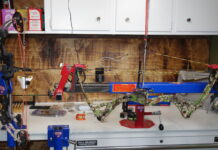I’ve owned and borrowed several bows over the past few years. As a petite female, finding the right fit can be challenging. When I found out about the new Hoyt’s Short Draw, I jumped at the chance to try it out. I ordered the Alpha AX-2 SD with a 55-65lb draw weight; my 25 ¼” draw length falls right in the middle of the module’s 23” to 27” range.
The Set-up and Tuning
I loaded the bow with a Spot Hogg Bonnie Pic Mount, Hamskea FS Raptor Peep System, and a Hamskea Trinity arrow rest. I also added the Hoyt Carbon Go Stix 2.0 Stand, and since I was custom ordering this, I chose a fluorescent purple string set.
With minor adjustments to my rest height after eyeballing the setup, I was able to get my 380 spine target arrows flying straight through paper with only adjusting timing and not adjusting the spacers (shims).
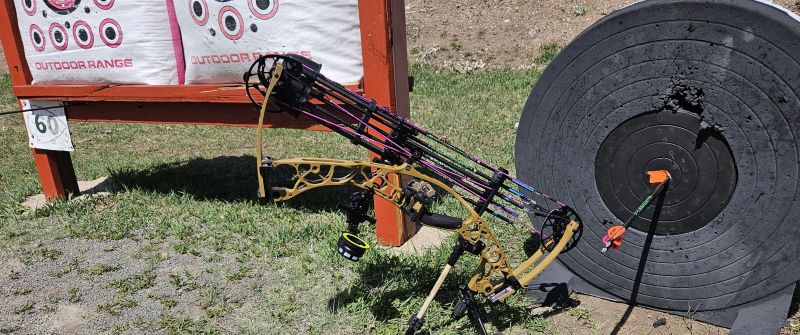
Shooting
For sighting in, I went to the Rocky Mountain Specialty Gear to get dialed in at 20 yards. I found that I was inconsistent; I was punchy and out of back tension when pulling through, and my draw length felt a little long.
I shoot best at a 25 ¼” draw length, so I initially set the Alpha AX2 SD to the 25 ½” draw length setting, as the RX8 I used last year was running short. Checking the actual draw length on our Total Bow Press, I learned that my AX2 SD was about ¼” long in draw length. Setting the module to the 25” position got me right at an actual draw length of 25 ¼”. Immediately after that change, I started to fall in love; my consistency in form and accuracy were spot on. Sighting in up to 80 yards came with ease, which was VERY surprising considering how much of a struggle that had been in the past.
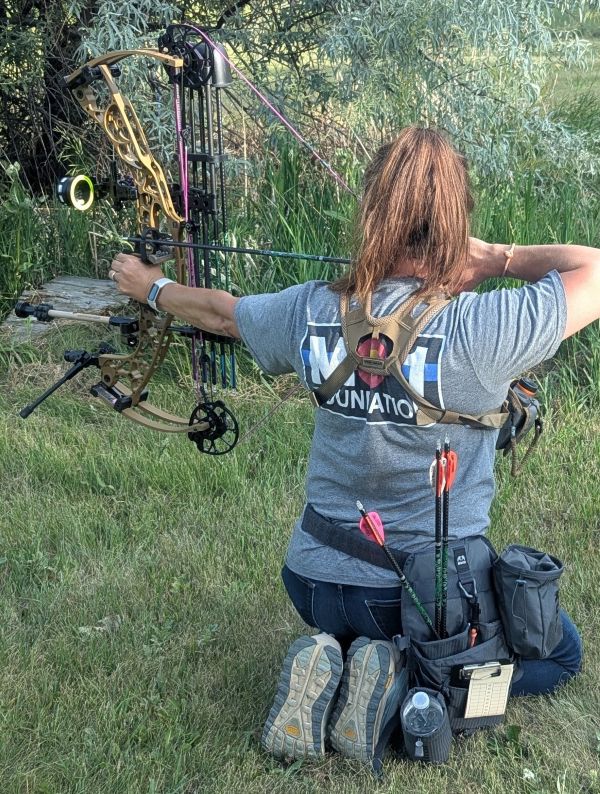
Summer Bow League
I shot the bow all summer in a 3D bow league using Victory VTAC 23 target shafts with a 380 spine. I found the bow to feel light in the hand and easy to manage for the 1.5 hours of shooting each night. The grip was comfortable for my hand size, and the draw cycle at my chosen 60lbs draw weight was easy on my body. I kept the factory strings, which performed well with no issues in peep rotation or stretch (yes, we measured).
My experience was in line with Hoyt’s claims that the Gen 4 HBX cams result in smooth draw and silent shots. While my shots weren’t silent, they were noticeably quieter than my Omnia. I also appreciated the simplicity of the HBX SD cams, with the only adjustment being the draw length, and not other cam adjustments such as back wall feel or let-off percentage. I should note that the HBX SD cam offers an 80% let off.
Broadhead Tuning
At the end of the summer, I switched to a 400 spine Victory 3dHV shaft; paper tuning with field points was easy. For broadhead tuning, my 3-blade Cutthroats were hitting right of my field points at 40 yards by a few inches. With the help of Bear Creek Archery, we adjusted the center of the rest slightly and switched the bottom cam’s gray shims so that the thicker shim was on the right. Effectively, we moved the bottom cam to the left; the top cam was already shimmed left with the gray shims from the factory. We consulted the Hoyt Spacer Tune Chart to determine the correct shimming direction for the cams. Once we moved the bottom shims, the field point and three-point broadhead were within the same group.
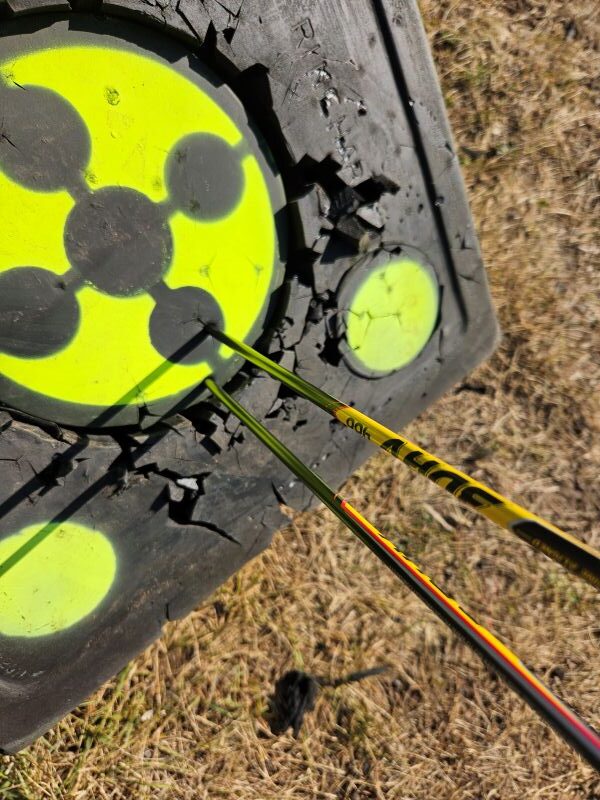
Oops!
I then went on to try a two-blade broadhead at a further distance. Big bummer though when a slight slip of the arrow in my hand landed me a cut string! The cut went through half the split above the peep.

String Replacement
The next business day, I called Hoyt and ordered a replacement string and another complete string set for future use —a little just-in-case — I have an archery tag coming up. I received the string order one week after ordering and was able to get the bow tuned quickly. As expected, with the new string, I needed to adjust my sight pins up a little. The following photo shows my 30-yard shot with the new strings and the required adjustment.
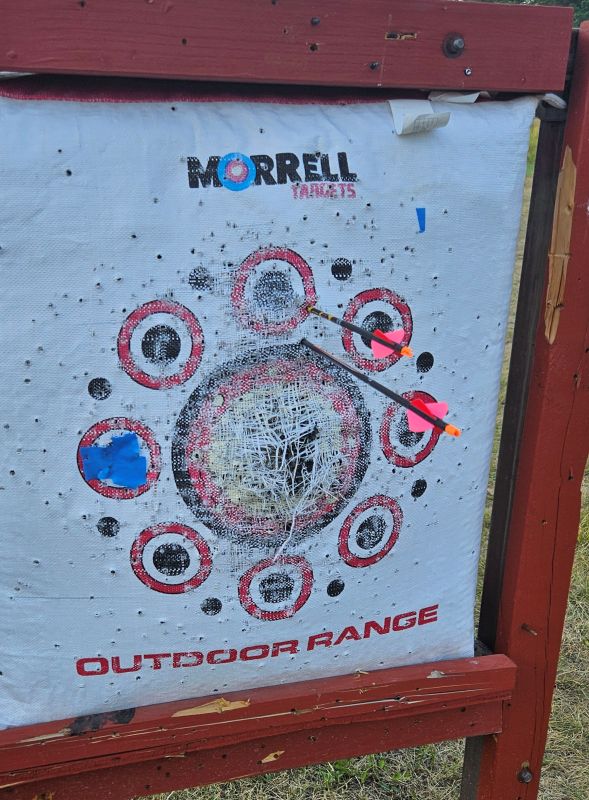
Yoke Tuning
With the new string, I didn’t need any tuning with field points, as there was no tear when shooting through paper. With the broadheads, I was a handful of inches right; enough to care about, but shimming the cams again would be too much of an adjustment. Even though Hoyt is using a yoke splitter for 2025, which at first glance seems to be free floating, we decided to experiment. We made two twists to the left top and bottom yoke to test if the new yoke splitter system had enough tension and friction to allow a little bit of yoke tuning. It worked. After that, the field point and broadhead were dialed in, and we made some Sharpie marks on the cables and yoke splitters to test if it would be a permanent solution.
Velocity
I compared the Alpha AX-2 SD at 59.86lb draw weight to my Elite Omnia 59.32 draw weight. I found the SD was slightly slower. Both bows were set to a 25 ¼” actual draw length, and the Hoyt’s FS Raptor peep sight is probably double the weight in grains than the Omnia’s standard Raptor peep.
| Velocity | Victory 3dHV 325grs | Victory Vtac 23 386.5grs |
| Hoyt AX2 SD 59.86lbs | 272.4 | 252.5 |
| Elite Omnia (Performance) 59.32lbs | 280.6 | 259.5 |
My Takeaway
Weighing 4.1lbs without accessories, it’s super light. More importantly, the weight is distributed in my hands so that it feels lighter than it measures. This also makes it easier to handle and hold for the longer shots with minimal stabilizer length and weight. With my previous bows, I wasn’t confident shooting past 60 yards, which resulted in me passing on a buck pronghorn last year that was at 70 yards. However, with this Alpha AX-2 SD I’ve been drilling arrows at 80 yards with first-shot accuracy. Overall, I’m happy with the Alpha AX-2 SD, as it fits me better and results in more precisely executed shots.
Comment or ask Cindy questions here.




